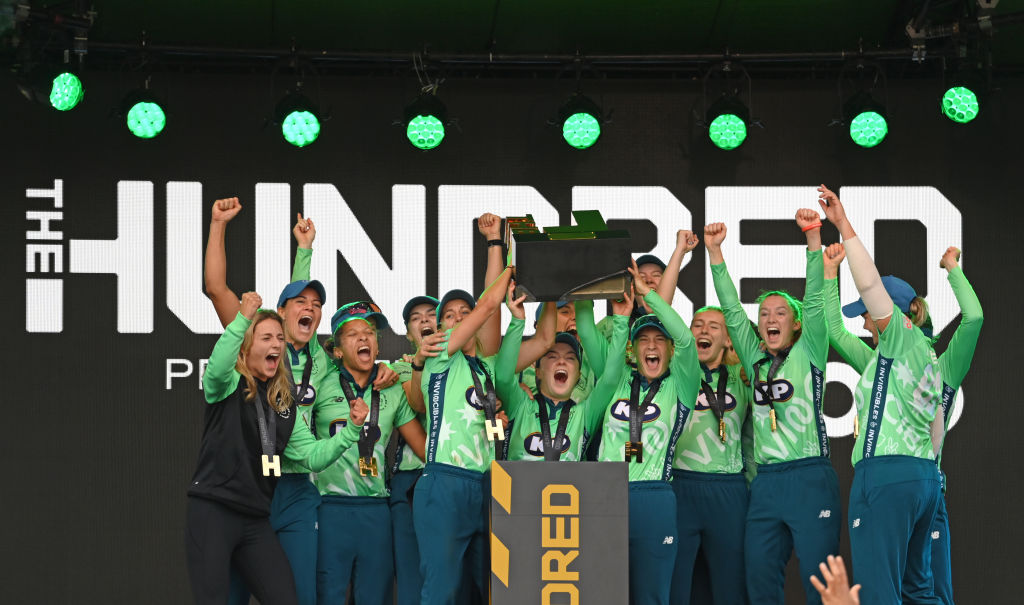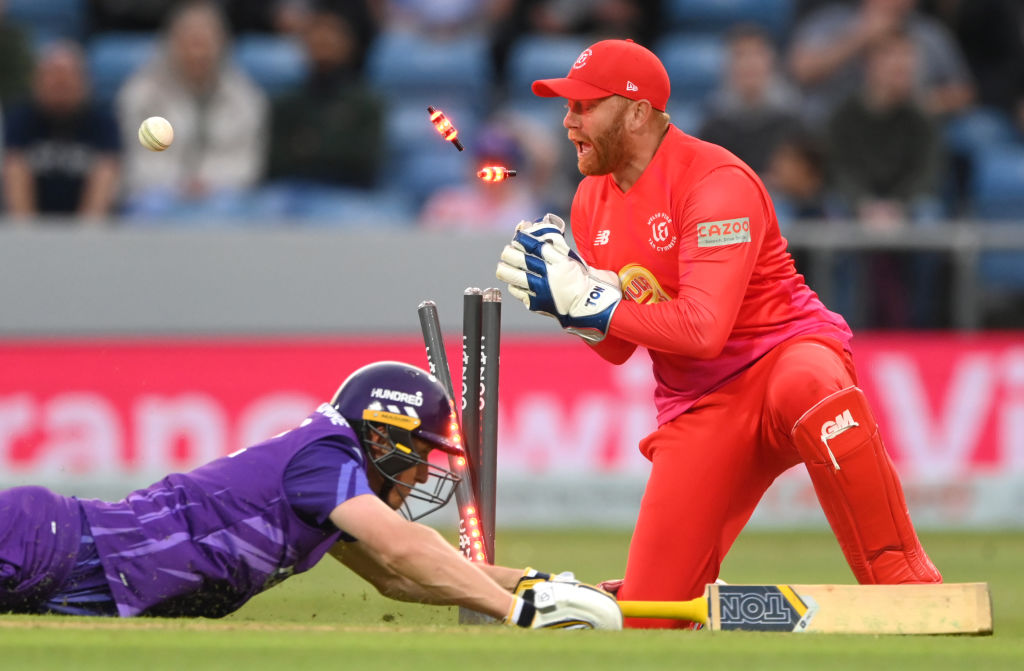First, England. Next, the world? Why those behind The Hundred have big ambitions

“Every successful brand in the world has to start somewhere, in one geography,” says Nick Sykes, global chief executive of FutureBrand, the company that developed the branding for The Hundred, English cricket’s newest tournament.
“But if you look at sporting formats around the world, many of them have travelled geographies and there are large parts of planet earth with big populations who are crazy about sport, that don’t currently play the beautiful game.
“I would suggest who knows where it could go? Brands don’t understand political and geographical boundaries.”
Ambitions are clearly running high at The Hundred HQ following the 100-ball competition’s successful debut in 2021.
The inaugural year saw record women’s crowds, engagement with new audiences and some of the world’s best players, including England stars Ben Stokes, Joe Root and Heather Knight, competing for the inaugural trophies. The draft for the second season takes place next month.
“If you look back to a couple of weeks before The Hundred [last year] there was still so much uncertainty in terms of how many people could get into the ground, and finishing the tournament,” Sanjay Patel, managing director of The Hundred, tells City A.M.
“It was a pretty tough environment but I think we were absolutely blown away by the success. The purpose was to deliver new audiences and we did that.”
The competition brought more than 8m new viewers to the game, with 55 per cent of tickets sold going to people who hadn’t watched live cricket before.
The sport has long been in a generational bubble, whereby five-day Test cricket is associated with an older audience while the short form of cricket is seen as being for younger fans and sometimes derided as “disco cricket”.
“What we had to do was disrupt the market,” Patel adds. “Because if we didn’t, I don’t think we would have reached a different audience to what cricket currently had.
“One of the things that we put a huge amount of emphasis on was making sure there was world-class cricket. If the sport isn’t world-class then I don’t believe it is sustainable in the long term.”
Balancing The Hundred with England success
When it comes to disruption, The Hundred continues to be one of the biggest factors in the English game. That presents its own headaches for governing body the England and Wales Cricket Board. Tasked with finding room for the tournament in a crowded calendar, the ECB eventually settled on starting the month-long slot on 3 August.
“I think it can all work together,” Patel says. “Cricket has to work together and all of the formats have to work together.
“We’ve learned a lot from last year in terms of how the season was structured and we’ve made some changes for this upcoming season.
“We are looking at the balance between white and red ball and we’re going to fit some more red ball cricket around the key times of the summer.
“We’ve also got the Commonwealth Games [which features cricket and runs from late July to early August] as well, which was another complication for us to consider.”
The ECB must also show it is not being distracted from the task of creating competitive England teams at international level, after both the men’s and women’s sides lost their Ashes campaigns over the winter.
“We’re going through a challenging time, from a performance point of view,” says Patel.
“But this is not the first time that cricket has gone through those challenging times in terms of going to the Ashes and not coming away with a win.
“We are looking at how we set up our systems in a better way to support the team in the future, but I think The Hundred can help.”

The draft and transforming the business of cricket
The tournament as a brand shook cricket as we knew it. The set-up wasn’t like the wildly popular Indian Premier League, where the noise from the fans can be heard for miles, nor was it like Test cricket, where the aim was to earn a ripple of applause now and then.
The Hundred looked for new ways to showcase the sport, via its format – a tweak to T20 cricket – a free-to-air deal, distinctive new graphics and the inclusion of a draft.
Drafts aren’t new to cricket but are to English domestic sport at a high level. Teams had the chance to take turns and pick male players for their squads, with the aim being eight balanced sides at the end.
This year’s draft has been delayed until April so as not to collide with the late Shane Warne’s funeral.
The women’s competition didn’t have a draft – and will not have one this year – because of what Patel describes as the “evolution” of the women’s game, but he does say that it is part of their plans for the future.
“This [the competition structure] is designed to do something different,” says Sykes, global chief executive of FutureBrand.
“When you look at it from a brand architecture point of view, the role that The Hundred plays within the ECB’s portfolio of brands is getting new people in an exciting way.
“It has a strategic role in transforming the business of cricket in this country and there’s room for it.”
Whether it’s the newest version of sliced bread or forever Disco Cricket in the hearts of onlookers, The Hundred is returning soon and those behind it are desperate for it to succeed and perhaps even shape cricket beyond these shores.